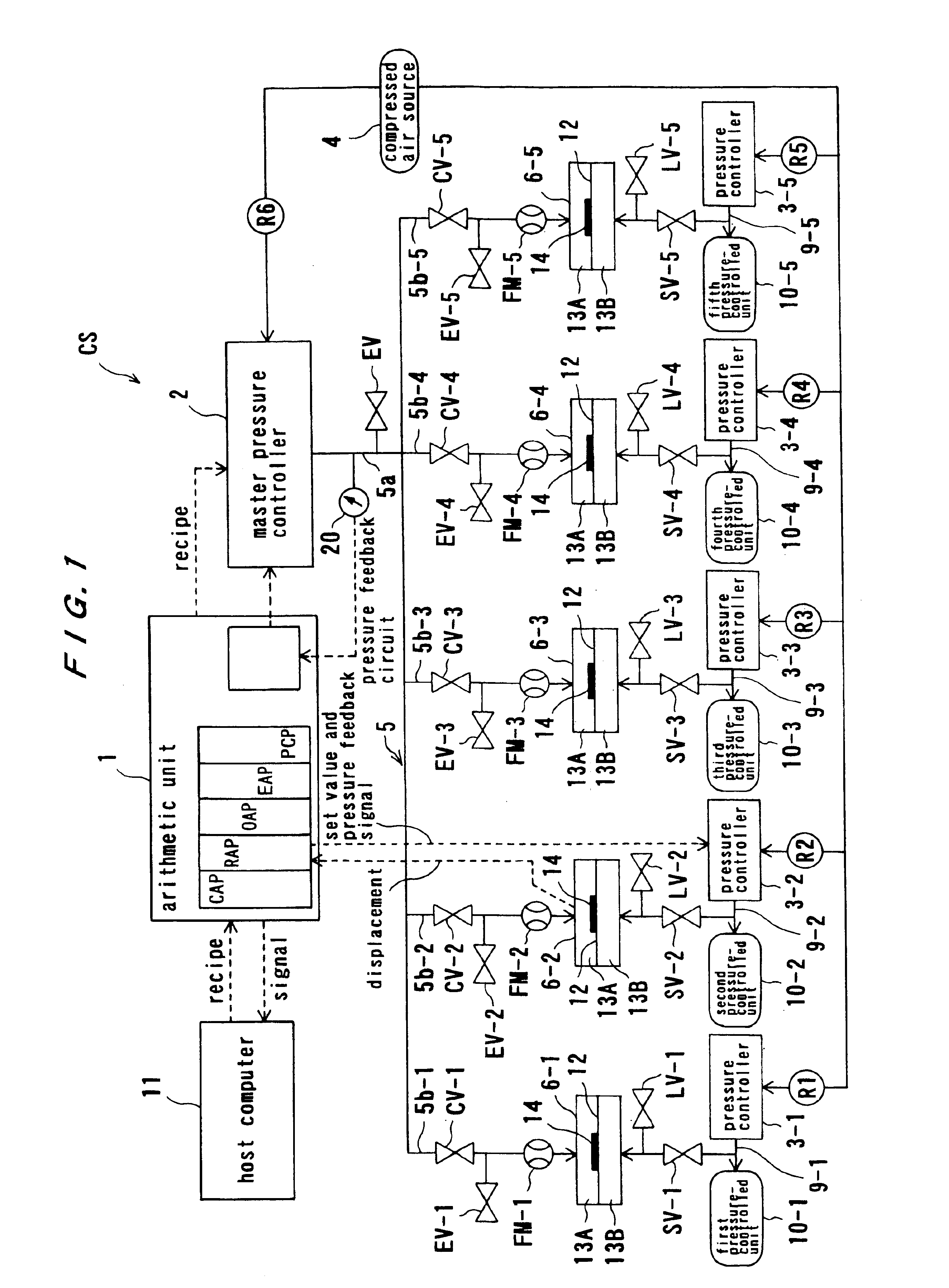Pressure control system and polishing apparatus
a control system and polishing technology, applied in the direction of lapping machines, servomotors, manufacturing tools, etc., can solve the problems of increasing increasing the complexity of semiconductor elements, and reducing the size of semiconductor devices
- Summary
- Abstract
- Description
- Claims
- Application Information
AI Technical Summary
Benefits of technology
Problems solved by technology
Method used
Image
Examples
Embodiment Construction
[0049]A pressure control system according to an embodiment of the present invention will be described below with reference to FIGS. 1 and 2.
[0050]FIG. 1 is a block diagram showing an overall arrangement of a pressure control system according to the present invention. The pressure control system serves to control pressures of a plurality of pressure controllers accurately to desired values by calibrating pressures of the plural pressure controllers on the basis of a reference pressure (criterion) established by output of a master pressure controller. As shown in FIG. 1, a pressure control system CS according to the present invention comprises an arithmetic unit (arithmetic device) 1, a single master pressure controller 2, and a plurality of pressure controllers 3-1, 3-2, 3-3, 3-4 and 3-5. The input side of the master pressure controller 2 and the input sides of the pressure controllers 3-1, 3-2, 3-3, 3-4 and 3-5 are connected to a compressed air source 4 through regulators R1, R2, R3...
PUM
 Login to View More
Login to View More Abstract
Description
Claims
Application Information
 Login to View More
Login to View More - R&D
- Intellectual Property
- Life Sciences
- Materials
- Tech Scout
- Unparalleled Data Quality
- Higher Quality Content
- 60% Fewer Hallucinations
Browse by: Latest US Patents, China's latest patents, Technical Efficacy Thesaurus, Application Domain, Technology Topic, Popular Technical Reports.
© 2025 PatSnap. All rights reserved.Legal|Privacy policy|Modern Slavery Act Transparency Statement|Sitemap|About US| Contact US: help@patsnap.com



